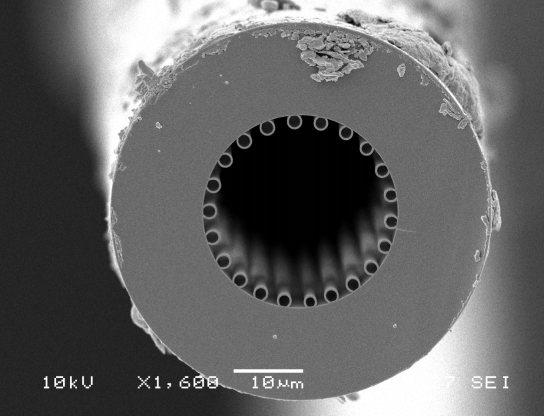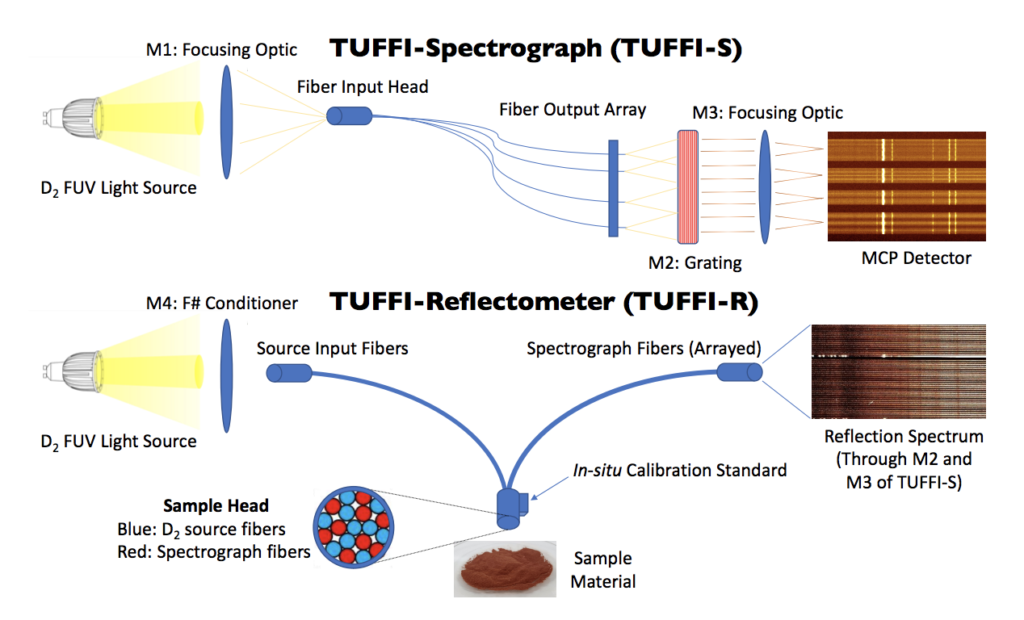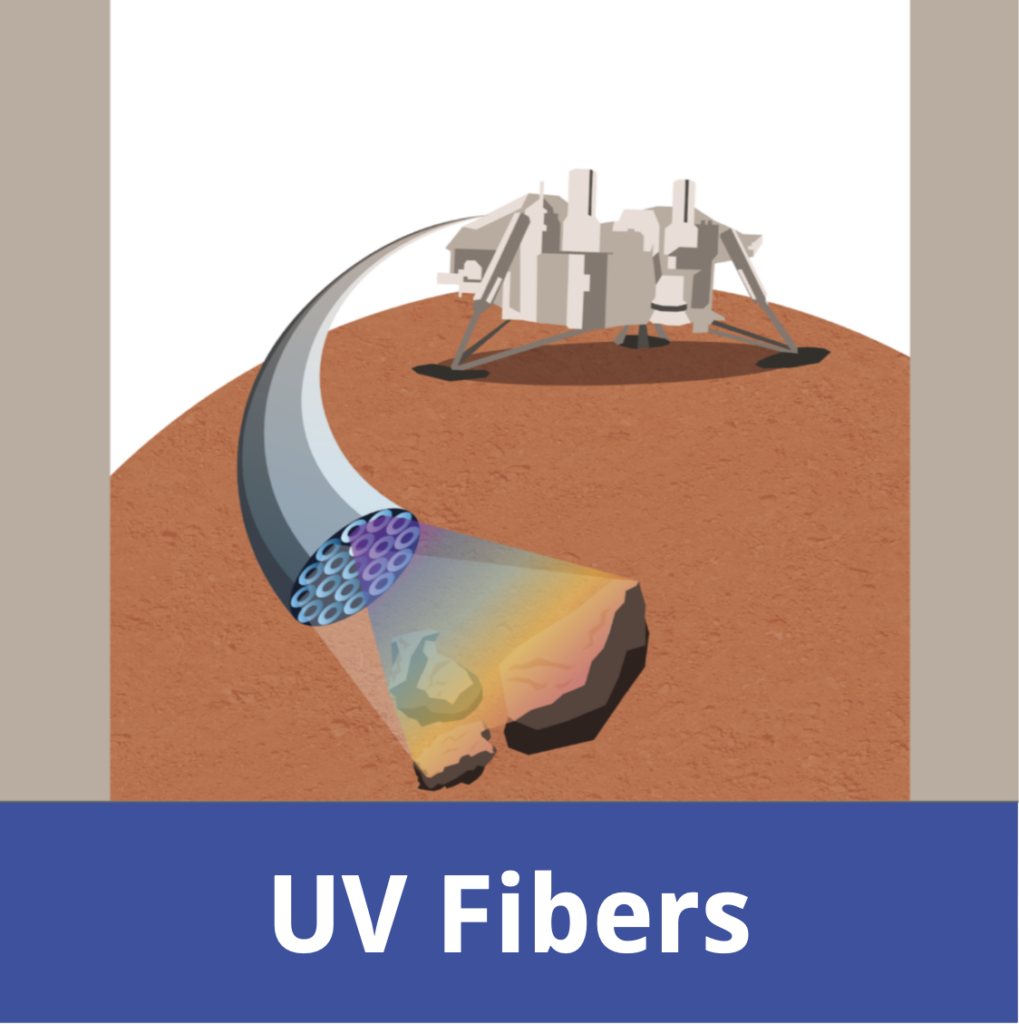Fiber optics provide a great deal of capability for science instruments that can’t easily be replicated with mirrors or lenses. Fibers can re-organize a focal plane into arbitrary shapes, mix light sources from different lamps to provide specific illumination spectra, breakout signals to multiple detectors, combine signals from various instruments into a single detector, and many more. Unfortunately, conventional fiber optics do not guide far-ultraviolet light, and those that push the current limits suffer from solarization, or the photo-degradation of the fiber material with exposure to UV light.
Working with a team of fiber optic experts at the University of Bath in the UK, CUSP researchers have helped to drive the development of the first ever far-UV transmitting fiber optic using a hollow-core approach. These “UV Hollow-Core Fibers” (UV-HCFs) guide light not through the fiber material itself, but rather through hollow microstructures at the fiber core. These microstructures can be optimized to guide certain wavebands and to suppress others, providing both transmission and filtering capability.

There are a broad range of opportunities for these fibers in science instrumentation, from ultra-wide field sampling of the sky to monitor plumes of ejecta from icy moons in-situ to simultaneous UV/IR observations of the same target to just a simple solution for bringing calibration signals into other science instruments. For the short term, however, the CUSP team is investigating building a UV reflectometer, TUFFI. TUFFI features a fiber bundle held on a robotic “arm” that contains both source fibers coupled to a UV-lamp, and detection fibers coupled to a compact spectrograph. By pointing the arm at a measurement sample, the bundle both illuminates the sample and then guides the reflected light back to a spectrograph for measurement. Devices of this type are widely used in mineralogy, but not at the sensitive far-UV wavelengths. As a stretch goal, we are looking into using these fibers for a far-UV Raman spectrograph.
The UV fibers project is led by Prof. Brian Fleming and Dr. Dmitry Vorobiev, assisted by CU aerospace engineering student Wes Gilliam.



